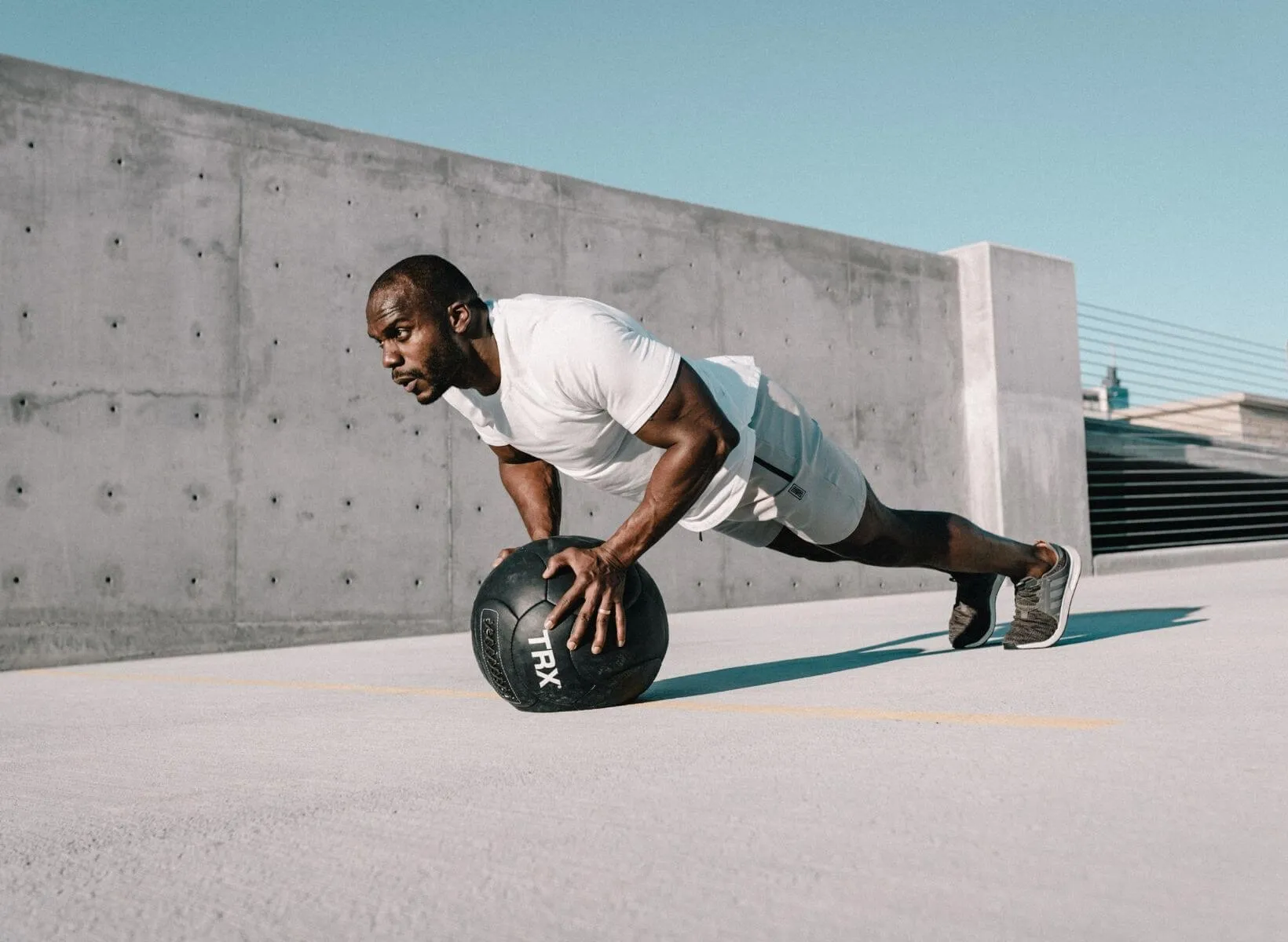Key Takeaways
- Exercise helps lower blood sugar when it spikes and stabilizes it more quickly than no activity at all.
- Exercise increases insulin sensitivity, which means the pancreas releases less insulin to help the cells absorb glucose.
- Reap the benefits of stable glucose from both short bouts of high-intensity workouts and longer, moderate-intensity activity.
One of the best strategies to lower blood sugar (glucose) quickly and keep it more stable for hours and sometimes days afterward: exercise.
Walking, running, circuit training, weight lifting, rowing, push-ups and planks, cycling, bursts of burpees, kettlebell micro workouts—in short, all physical exercise encourages glucose uptake and improves insulin sensitivity<sup>1</sup>. (Read more about why this is important for better health in the next section.)
Exercise helps lower and stabilize glucose. Every little bit helps and the duration and intensity required to reap the benefits of lowered blood sugar may surprise you.
{{mid-cta}}
Quick Primer on Why Exercise Encourages a Healthy Metabolism
When resting and after glucose gets released into the blood from eating or drinking, insulin is released by the pancreas. If the body doesn’t use the glucose present for fuel, insulin directs the unused glucose to liver and muscle glycogen stores. If these stores are full, excess glucose gets moved to fat storage.
When exercising, the muscles get energy from increased glucose uptake and glycogenolysis (the conversion of glycogen to glucose for immediate energy). In short, exercise burns the glucose you eat and drink rather than storing it.
Healthy people with metabolic flexibility—the ability to switch between burning glucose and fat without major physiological impact—can burn the most readily available fuel (glucose in the blood, stored glycogen, or stored fat) without issue. They also tend to be insulin sensitive, requiring smaller amounts of insulin (a hormone released by the pancreas that helps the cells absorb glucose) to lower blood glucose levels compared to those with low insulin sensitivity.
People with low insulin sensitivity, aka insulin resistance, require larger amounts of insulin to keep blood glucose stable. A high amount of circulating insulin (hyperinsulinemia) is associated with metabolic disease<sup>2</sup>, high blood pressure<sup>3</sup>, obesity<sup>4</sup>, heart disease<sup>5</sup>, and more. Stress and illness may also introduce reduced insulin sensitivity but should resolve once the stress or illness passes.
Exercise increases insulin sensitivity. According to research, all types of exercise seem to improve the body’s insulin response. One review of studies asserted that moderate-intensity aerobic exercise improved insulin sensitivity<sup>6</sup> compared to high-intensity aerobic exercise. Several studies highlight the efficacy of resistance training among various populations (elderly women<sup>7</sup>, adolescent males<sup>8</sup>, men with insulin resistance<sup>9</sup>) in increasing insulin sensitivity.
One study on 30 non-obese men showed improved insulin sensitivity for 12–48 hours after just one workout<sup>10</sup>—researchers did note that participants had to burn about 900 calories (over the course of 30–120 minutes; that’s working relatively hard) to see this change after only one session.
The real metabolism-improving work begins after you stop exercising. Your rewards for working out:
- Glucose uptake remains elevated for several hours. This post-workout afterglow will likely make you less prone to glycemic variability<sup>11</sup> (swings in blood sugar).
- Exercise increases blood and oxygen flow to the muscles; this improves insulin sensitivity and enhances B cell activity<sup>12</sup> (cells that support our immune systems and generate new healthy cells).
So, how can you lower blood sugar quickly through exercise? Easy. Just move!
How Long and How Hard Do You Need to Exercise to Lower Blood Sugar?
If you think you have to slug through 60 minutes of exercise or more to lower blood sugar, get ready to whoop out loud.
One study showed that small doses of intense exercise—six, one-minute intervals performed at 90% max heart rate—lowered post-meal glucose and reduced glucose concentration<sup>13</sup> in the blood for a day after. Results showed microworkouts, or “exercise snacks,” lowered glucose response to meals just as well as a moderate-paced 30-minute walk done before eating—and possibly even better than a brisk 30-minute walk after dinner.
Another study found that eight to 20 minutes per week of high-intensity exercise improved blood glucose<sup>14</sup> on that day and for up to three days after the workout in both diabetics and non-diabetics.
You don’t have to go to the mattresses during every workout to lower blood sugar. Particularly if you have impaired glucose tolerance, the oxidative stress that high-intensity efforts can cause<sup>15</sup> could derail your efforts.
A small study conducted on women with diabetes found that low-intensity exercise (50% of max effort) was as effective as high-intensity exercise (75% of max effort) in enhancing insulin sensitivity<sup>16</sup>. Another study on men revealed that post-meal exercise at any intensity<sup>17</sup> for 30 minutes impacted glucose regulation equally.
A meta-analysis of 51 scientific studies revealed that a single bout of aerobic exercise performed for at least 30 minutes significantly decreased glucose and insulin concentrations after eating<sup>18</sup>.
The takeaway: Short bouts of high-intensity workouts can lower blood sugar when it spikes and keep glucose low in the hours and days following in healthy, fit people, but that doesn’t mean a moderately-paced walk for 30 minutes doesn’t stabilize glucose. It does. Less intense exercise proves beneficial and supremely better than no activity at all.
What Type of Exercise Lowers Blood Sugar the Best?
Anaerobic, aerobic, and resistance exercises encourage GLUT4<sup>19</sup>, a protein that transports glucose stored in fat tissue and muscle, to move glucose out of storage without the help of insulin<sup>20</sup>.
GLUT4 is your proactive friend because it saves the pancreas from releasing insulin.
Think of insulin as a bossy hall monitor who dictates where students should go, how quickly, and under threat of detention. Insulin, like hall monitors, can come and go as much as desired. The more frequently insulin gets released into the body, the greater the risk of hyperinsulinemia, which increases the chances of obesity, type 2 diabetes, cardiovascular disease<sup>21</sup> as well as decreased life expectancy.
A well-balanced exercise plan includes both cardio and strength training, but for the purposes of lowering blood sugar quickly after a spike—and keeping glucose stable for a while after—you can pick and choose the type of movement that suits your circumstances and mood at the time.
Exercise proves beneficial not only for lowering glucose spikes when they happen but also for stabilizing glucose when you’re resting.
Combine a strategic workout plan where the effort, duration, frequency, and timing compliments a nutrition plan where you keep your glucose stable most of the time, and you’ll reap the benefits of metabolic flexibility and optimal health.
For Advanced Signos Users
Review your past food reports to find a food that spiked your glucose, and make note of how high you spiked. Try to mitigate the spike by:
- Day 1: Exercise for 30 minutes at moderate intensity before eating the food that spiked you. Make note of your glucose response after eating the food.
- Day 2: Exercise for 30 minutes at a moderate intensity after eating the food that spiked you—within 15–20 minutes after eating. Make note of your glucose response after eating the food.
Which exercise effort lowered your glucose response to the food the most?
Topics discussed in this article:
References
- https://www.ncbi.nlm.nih.gov/pmc/articles/PMC2278791/
- https://link.springer.com/article/10.1007/s13679-017-0261-z
- https://www.ahajournals.org/doi/full/10.1161/01.HYP.30.3.650
- https://www.jci.org/articles/view/111776
- https://www.nejm.org/doi/full/
- https://pubmed.ncbi.nlm.nih.gov/27796854/
- https://pubmed.ncbi.nlm.nih.gov/26744506/
- https://pubmed.ncbi.nlm.nih.gov/16826016/
- https://pubmed.ncbi.nlm.nih.gov/15628572/
- https://pubmed.ncbi.nlm.nih.gov/17635103/
- https://www.ncbi.nlm.nih.gov/pmc/articles/
- https://www.ncbi.nlm.nih.gov/pmc/articles/
- https://link.springer.com/article/
- https://www.ncbi.nlm.nih.gov/pmc/articles/
- https://spectrum.diabetesjournals.org/content/
- https://journals.physiology.org/doi/abs/10.1152/
- https://onlinelibrary.wiley.com/doi/abs/
- https://link.springer.com/article/
- https://pubmed.ncbi.nlm.nih.gov/23899560/
- https://www.ncbi.nlm.nih.gov/pmc/articles
- https://bmcmedicine.biomedcentral.com/articles/




.svg)










.svg)
.svg)
.svg)
.svg)
.svg)
.svg)
.svg)
